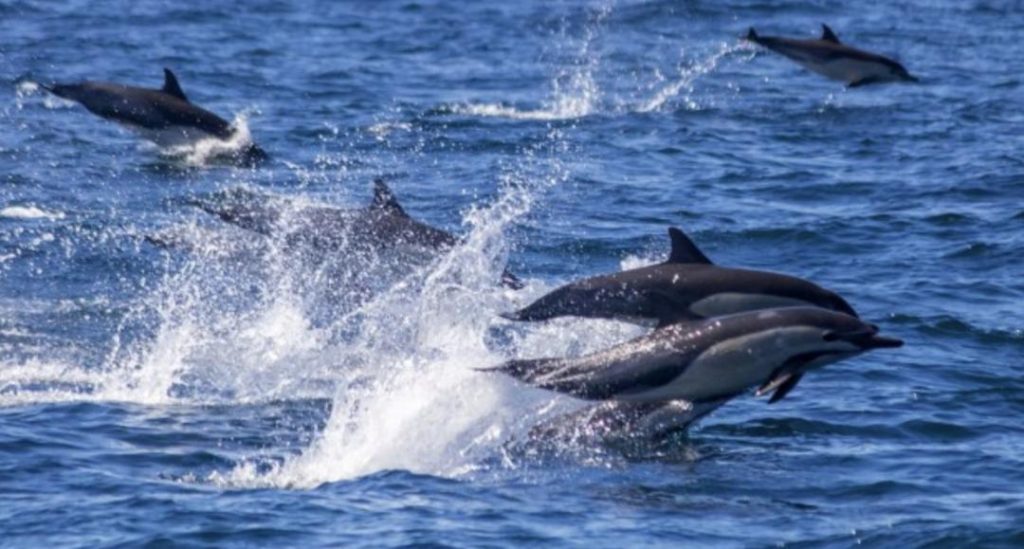
Dolphins & Whales Regularly Socialise with Each Other: Study
In a fascinating discovery, researchers from Griffith University have found that dolphins and whales regularly socialize with each other, engaging in playful interactions that showcase the complexity of their relationships. The study, published in the journal Marine Mammal Science, analyzed videos and photographs of interactions between baleen whales and dolphins, covering 19 different species across 199 separate events.
The findings suggest that these marine mammals frequently socialize and play with each other, with many interactions being mutual and reciprocal. The most common interaction observed was dolphins swimming near the whale’s head, often accompanied by jumping and splashing. This behavior was seen in multiple species, including humpback whales, blue whales, and fin whales.
One of the most surprising aspects of the study was the level of involvement from bottlenose dolphins, which were found to be the most active participants in these interactions. Bottlenose dolphins are known for their intelligence and social behavior, and this study suggests that they play a key role in facilitating these interspecies interactions.
The researchers used a combination of video and photograph analysis to identify and categorize the different types of interactions observed. They found that these interactions were not limited to simple swimming together, but often involved more complex behaviors such as playing, chasing, and even what appeared to be a form of “tag” game.
One example of this was observed in a group of bottlenose dolphins and minke whales, where the dolphins would swim alongside the whales, tapping them with their noses before speeding off, only to have the whales chase after them. This type of playful behavior has been observed in human children, and the fact that it is also seen in dolphins and whales highlights the importance of play in social bonding and cognitive development.
The study’s lead author, Dr. Alistair Hobday, noted that these interactions are not just limited to specific species or locations. “We found that these interactions were happening across different species, ages, and sexes, and in a variety of locations around the world,” he said. “It’s clear that these animals are capable of complex social behavior and that play is an important part of their lives.”
So, why do dolphins and whales engage in these playful interactions? While we can’t directly ask them, the researchers suggest that these behaviors may serve several purposes. For one, they may help to strengthen social bonds and improve communication between individuals. Play is a well-known way for humans to build relationships and establish trust, and it’s likely that dolphins and whales are using similar strategies to achieve similar goals.
Additionally, these interactions may also serve as a way for these animals to practice and refine their social skills, such as cooperation and coordination. By working together and playing together, dolphins and whales may be able to develop a sense of trust and cooperation that is essential for their survival in the wild.
The study’s findings have important implications for our understanding of marine mammal behavior and social dynamics. By recognizing the complexity of these interactions, we can better appreciate the importance of preserving and protecting these animals and their habitats.
As Dr. Hobday noted, “Our study highlights the importance of preserving and protecting the ocean and its inhabitants. The more we learn about these amazing animals, the more we realize how much we still have to learn and how much we need to protect their habitats and behaviors.”
In conclusion, the study’s findings are a testament to the power of play and social interaction in the animal kingdom. Dolphins and whales are capable of complex social behavior, and their playful interactions are a reminder of the importance of preserving and protecting these incredible creatures and their habitats.






